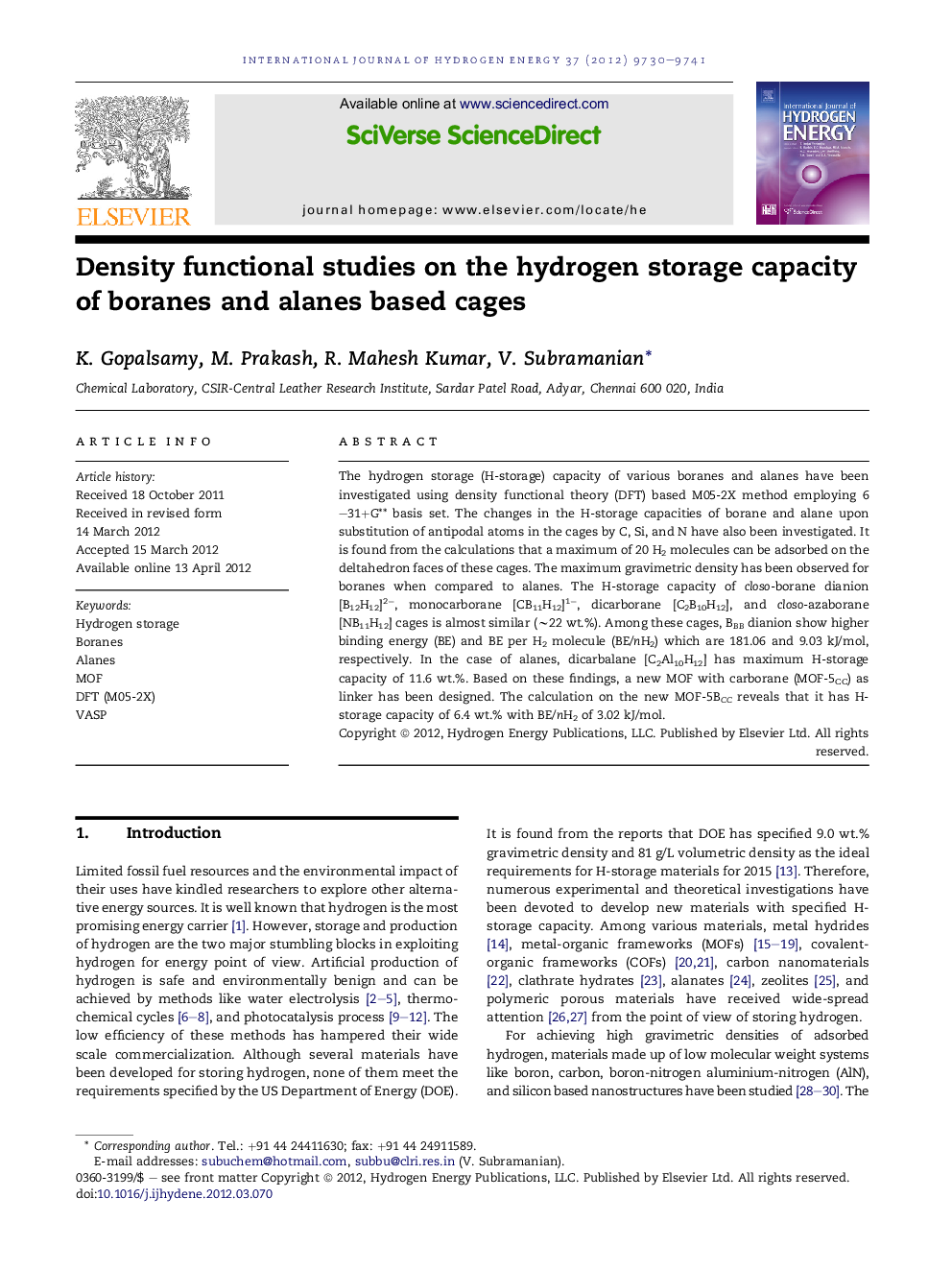| Article ID | Journal | Published Year | Pages | File Type |
|---|---|---|---|---|
| 1271287 | International Journal of Hydrogen Energy | 2012 | 12 Pages |
The hydrogen storage (H-storage) capacity of various boranes and alanes have been investigated using density functional theory (DFT) based M05-2X method employing 6–31+G** basis set. The changes in the H-storage capacities of borane and alane upon substitution of antipodal atoms in the cages by C, Si, and N have also been investigated. It is found from the calculations that a maximum of 20 H2 molecules can be adsorbed on the deltahedron faces of these cages. The maximum gravimetric density has been observed for boranes when compared to alanes. The H-storage capacity of closo-borane dianion [B12H12]2−, monocarborane [CB11H12]1−, dicarborane [C2B10H12], and closo-azaborane [NB11H12] cages is almost similar (∼22 wt.%). Among these cages, BBB dianion show higher binding energy (BE) and BE per H2 molecule (BE/nH2) which are 181.06 and 9.03 kJ/mol, respectively. In the case of alanes, dicarbalane [C2Al10H12] has maximum H-storage capacity of 11.6 wt.%. Based on these findings, a new MOF with carborane (MOF-5CC) as linker has been designed. The calculation on the new MOF-5BCC reveals that it has H-storage capacity of 6.4 wt.% with BE/nH2 of 3.02 kJ/mol.
Graphical abstractFigure optionsDownload full-size imageDownload as PowerPoint slideHighlights► H-storage capacities of various boranes and alanes have been calculated using DFT methods. ► The effect of substitution of antipodal atoms in cages by C, N and Si has been assessed. ► Boranes exhibit maximum gravimetric density and with higher BE/nH2. ► Among various alanes, AlCC has maximum H-storage capacity of 11.6 wt.%.
